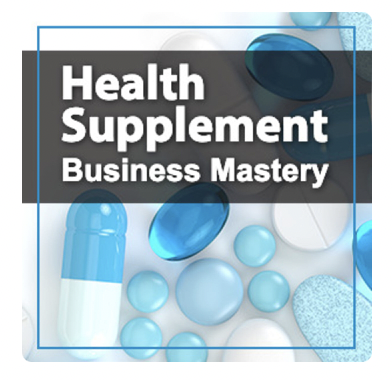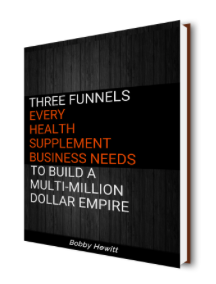 The question I get asked a lot by companies looking to increase their conversion rates is, how do we know what to test? Some conversion rate marketing experts will tell you to test everything, but that’s very naive. No company can test everything. Although there will never be a shortage of ideas to test, the truth is testing takes time, money and resources. Every business has to balance these three in everything they choose to do. Testing is no different. Even in a business with an experimental culture that dedicates their life to continuously improving their marketing conversion rate will never get to test everything. There is always something new and different to test and tune for optimal performance.
The question I get asked a lot by companies looking to increase their conversion rates is, how do we know what to test? Some conversion rate marketing experts will tell you to test everything, but that’s very naive. No company can test everything. Although there will never be a shortage of ideas to test, the truth is testing takes time, money and resources. Every business has to balance these three in everything they choose to do. Testing is no different. Even in a business with an experimental culture that dedicates their life to continuously improving their marketing conversion rate will never get to test everything. There is always something new and different to test and tune for optimal performance.
More companies should adopt a culture of experimentation and testing. What CEO doesn’t want to increase results? Unfortunately human nature and ego gets involved in decision-making and no one wants to be wrong. To be truly successful you must learn to fail fast and often. In testing there is no failure only feedback. The feedback of your designer, CEO, director of marketing, etc. are all meaningless to the feedback of your customers and prospects. Let them vote with their click and test, test, test until you get it right.
So where should you start? You’re ready to make some improvements with conversion rate optimization. Everyone in your company is excited and can’t wait to get started including you but you’re not sure where to start your first test.
Let’s tackle the question of what to test in two parts. First, let’s look at how to choose what page or pages to test and then what elements on that page to test.
How to choose the best page to start testing
If this is the first test within your organization stay clear of all sacred cow pages. These are the pages that someone in your company, usually in a higher position than you, has a personal stake in. Perhaps they had a considerable stake in the final look of the page, or it’s just on their list of pet peeves. If your CEO is in love with the home page, let him be happy, for not anyway. There is no better way than to kill a conversion rate optimization campaign than to prove the CEO wrong with a better performing sacred cow page. You’re going to need to get a quick win with your first test so that you will be allowed to continue with follow-up tests and expand to other pages on your site, and maybe eventually come back around to that sacred cow page.
Don’t let your curiosity get out of control. Every effort towards conversion rate optimization needs to be driven by a business goal. Time and resources are just too precious to test anything that is outside the circle of the business needs. Every test should start with a “which” question. Which page is bringing in the highest revenue? No other question is going to get your CMO and CEO excited at the same time. The answer to this question will be different for each website and each business model, let’s look at a few.
For an Ecommerce site your business model is driven by selling stuff. There’s a ton of things to test on an Ecommerce site and your first reaction might be to think the shopping cart would be the page that brings in the highest revenue, and there is usually a lot of opportunity for conversion rate optimization at the shopping cart level. But since you’re just getting started and this is your first test the shopping cart is a big nut to crack and I wouldn’t want to have your first test killed by the IT or web development department because of the complexity of the shopping cart page. Remember it’s all about gaining internal trust for your first test so you can do more tests and move the bottom line to get that corner office someday.
So what other page besides the shopping cart is bringing in the most revenue? The answer is the detail page of your best selling product. Here’s my thought process, in order to get the product into your shopping cart the step before it gets added is most likely the detail page. It’s the step above the cart in the conversion funnel.
For a subscription site, revenue is driven by people signing up. The page to test on this type of site is your registration page or your squeeze page where your visitor chooses which subscription level is right for him.
For a content site revenue may be tied to advertising. In which you’ll need to take a look into your web analytics to see which pages have the highest views, or average time on page. A quick talk with the ad sales department can also help you to find out which type of ads on your site have the highest CPM ad revenue.
You may also wan tot take a look at the top pages with the highest exit rates for a content site. This is an indication of which pages may need some help with visitor engagement. Or pages with high bounce rates to find which are performing poorly. Using bounce rate and exit rates to start your marketing optimization with can be tricky since there are more factors involved like motivation and what channels visitors were driven to your site from.
How to choose what elements to test
As stated earlier there should be no shortage of ideas here, if there are just email me bobby@creativethirst.com for some ideas. But as before it depends on the type of website. But here are the top three elements to test on any type of site.
The Page Headline – Headlines are where you can usually get your biggest bang for your optimization buck. Visitors in your marketing funnel need to be sold to at each step of your funnel. Your page headline is where you express the value proposition and the reason why they should get your conversion.
The Call to Action – It doesn’t make sense that a webpage designed for a prospect to complete an action would make it difficult for a visitor to do but more often than not that’s exactly the case. Calls to action are hidden, small, not obvious (too hard to see because of lack of contrast, things that don’t look like buttons or links) and a host of other marketing sins that are cast upon them. It amazes me how calls to action are almost always an afterthought to design.
The Page Layout – The page itself is a complex element because it contains so many smaller elements that combine to do one big job of conversion. Most page layouts although well executed as a page don’t take into account conversion. Each page is extremely complex when it comes to the psychology of the page and conversion but the main take away would be to test single column and double column landing pages. The biggest thing to remember is the thought process in the mind of your visitor when designing page layout.
Each one of these three elements are intertwined broadly with some action on your page no matter what type of site you have.
The job of website optimization is never done. Websites are never finished products. They are living breathing things that change constantly because the world in which they exists is in a constant state of change. As web marketers we must constantly challenge the status quote and endlessly improve and learn.
Imaged used under creative commons from PaulS via Flickr
Discover the 3 funnels that can help your health supplement business succeed.

Listen to the Health Supplement Business Mastery Podcast for for dietary supplement entrepreneurs and marketers.



